NJ tube placement
The module covers:
- Different types of NJT
- How to do it
- Aftercare
Different types of NJT
- Freka Endolumina- is 8Fr and it is placed through the biopsy channel of the scope (TTS- through the scope)
- Corflo- is 10F and is placed over a guide wire and it does not go through the biopsy channel
- Flocare Bengmark Naso-Intestinal tube- inserted non-endoscopically using normal peristalsis-see the video link below
How to do it
TTS type ( Freka Endolumina)
- It comes with a length of 270cm and 8Fr (2.6mm outer diameter) and so is compatible with the instrument channel of the endoscope ( >=2.8mm)
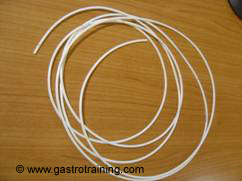
Picture1: The Freka NJT - Insert the scope orally and advance it as far as possible through the stomach towards the intestine

Picture2-4: Freka NJT going through the biopsy channel and the endoscope being removed subsequently keeping the NJT in
- Once the desired position has been reached, advance the intestinal tube (NJT) through the instrument channel of the scope to reach under observation a position distal to the ligament of Treitz. The distal tip of the tube may be moistened with sterile water to assist insertion.
- Approx 100-105cm mark should be at the incisor level when the tip is in jejunum.
- Withdraw the scope with rotating /jiggling motion otherwise the friction between the scope and the NJT will pull the tube out
- Feed more NJT as the scope comes out
- Assistant holds the end of the scope as it comes out of the mouth and then holds the NJT at lips while the scope is removed
- So now the NJT is placed but coming out through the mouth which needs to be re-routed through the nostril.

Picture5 and 6: The NJT is being re-routed through the nose: Courtesy Fresenius Kabi - Pass a NG tube (16 size) / blue re-routing catheter through the nostril
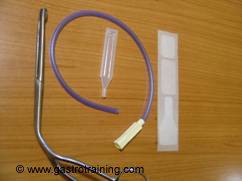
Picture 7: Re-routing catheter, silicone oil, adhesive dressing and Magill’s forceps - Grab it from oropharynx with a Magill’s forceps ( +/- using laryngoscope) and pull out through mouth
- Ensure that the tube is in position against the rear wall of the pharynx without any loops.
- Cut the end of the NG tube with a scissors/ No cutting if it is a re-routing catheter
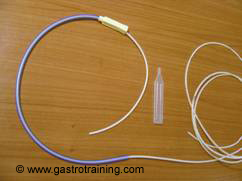
Picture 8: The NJT is passes easily through the re-routing catheter when lubricated with silicone oil - Thread the NJ tube into the lumen of the NG tube or the opening of the re-routing catheter
- Pull out the NG tube from the nostril and at the same time looking inside the mouth (+/- with the help of a laryngoscope and of the Magill’s forceps). Make sure the NJ tube is not slipping out of the oesophagus upwards.
- The NJT is now in trans-nasal position
- Cut the NJT to desired length and advance the fastening screw over the NJT

Picture 9 and 10: The fixing of the Luerlock connector: Courtesy Fresenius Kabi - Insert the metal pin of the Luerlock connector as far as possible into the NJT and screw the fastening screw tightly to the stop.
- Thread in the connectors
- Tape the NJ tube at nostril with a y shaped Elastoplasts (stem of the Y on bridge of the nose limbs surround the NJT) and also at the side of the cheek and also behind the ear.
- Record the length of the tube at nostril and document in the tube care plan.
Corflo PEJ
- This is a bigger tube and has to guided over a guide wire
- Insert the scope orally and advance it as far as possible through the stomach towards the intestine
- Once the desired position has been reached, advance the guide wire through the instrument channel of the scope to reach under observation a position distal to the ligament of Treitz.
- Approx 100-105cm mark should be at the incisor level when the tip is in jejunum.
- Withdraw the scope keeping the guide wire in
- Feed more guide wire as the scope comes out
- Assistant holds the end of the scope as it comes out of the mouth and then holds the guide wire at lips while the scope is removed
- So now the guide wire is placed but coming out through the mouth which needs to be re-routed through the nostril.
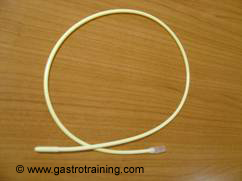
Picture 11: Re-routing catheter - Pass a supplied re-routing catheter through the nostril
- Grab it from oropharynx with a Magill’s forceps ( +/- using laryngoscope) and pull out through mouth
- Ensure that the tube is in position against the rear wall of the pharynx without any loops.
- Thread the guide wire into the lumen of the re-routing catheter
- Pull out the re-routing catheter from the nostril and at the same time looking inside the mouth (+/- with the help of a laryngoscope and of the Magill’s forceps). Make sure the guide wire is not slipping out of the oesophagus upwards.
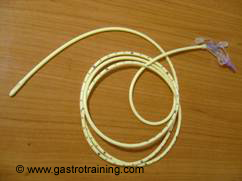
Picture 12: The Corflo NJT with pre-fitted connector - Next thread the NJT over the guide wire. Before threading the NJT over the guidewire, flush the tube with 20 ml of water, using a syringe inserted into the access port. Also dip the distal end of NJT in water. These steps are crucial as this flushing and dipping activates the C-19 lubricant to facilitate tube passage over the guidewire.
- It comes ready with the attachment. So just fix it with adhesive dressings.
Aftercare
- AXR to confirm the position- the NJT should be free of tension and straight i.e. without loops, in a position distal to the ligament of Treitz.
- Remember to flush the NJT with 30ml of cool boiled water before and after the feed or at least once a day.
- It can remain in position for up to four weeks if the tube and the nose are carefully cared for. If enteral feeding is needed after this a PEG-J is recommended.
Here is the link for Naso-jejunal tube insertion video:
No video found so far. One good link is given below for non-endoscopic naso-jejunal tube insertion. http://www.youtube.com/watch?v=HUv13Xy0GwE
Acknowledgement/Bibliography:
- Guidelines for enteral feeding in adult hospital patients : BSG 2003
- Niv E et al. Post-pyloric feeding. World J Gastroenterol. 2009 Mar 21;15(11):1281-8.
- DiSario JA. Endoscopic approaches to enteral nutritional support. Best Pract Res Clin Gastroenterol. 2006;20(3):605-30.
- Product guide of the respective companies- Fresenius Kabi, Merck Serono and Nutricia








